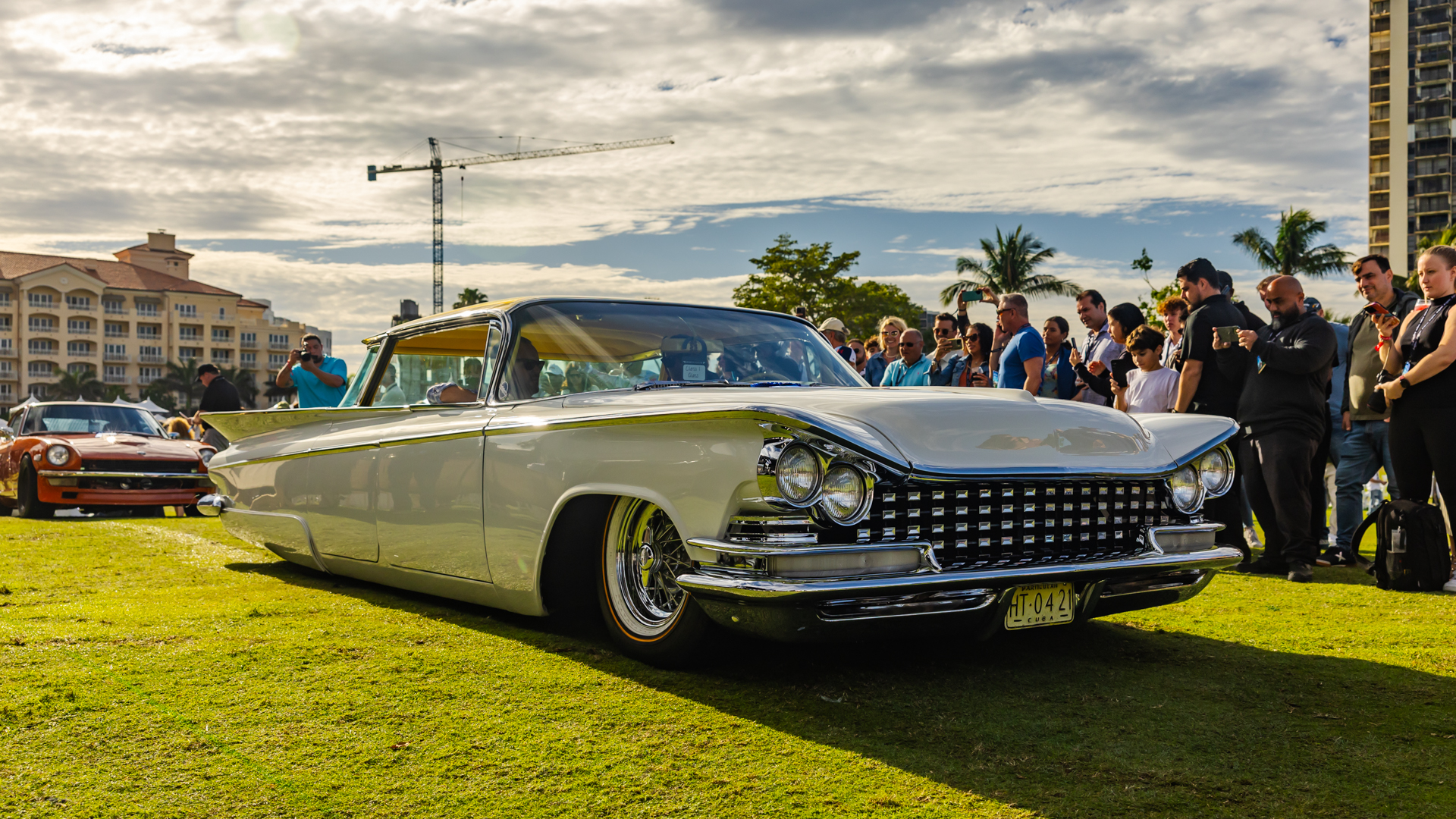Glass
Aside from protecting an automobile’s occupants from harm, and letting light cascade into the interior, automotive glass is also a critical – though sometime missed – element in car design. ‘Clear’ has always been on the designer’s color palette. A tiny Brooklands windscreen poking upward from the cowl denotes speed, as the driver tries to shrink himself behind it. Much larger areas of glass helped to define cars during the Classic Era. Picture a mental image of the flat windshields of a Duesenberg dual-cowl phaeton. Next, consider that the Fleetwood catalog in 1934 included a similar Art Deco creation with dual vee windshields. A single vee windshield, the Hallock, transformed many a fenderless 1932 Ford hot rod into something of a sports car. In terms of drama, few cars can top the sweeping wraparound windshield and backlight that defined four-door General Motors cars as part of its Vista theme in the late 1950s. And a special measure of difficulty goes to the drop-down backlight of the original Plymouth Barracuda from 1964, which was drooped, while still warm and pliant, over a form to mold its unique shape.

